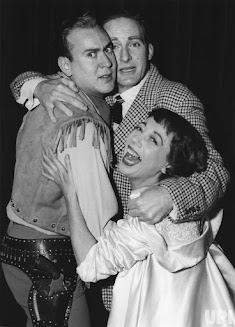A priest, a minister and a rabbi walk into a bar. The bartender looks at them and says, “What is this? Some kind of joke?”
Rim shot.
What’s so funny? These days, not a lot. The virus, the shootings, the protests, the politicians all have arrived to create the perfect storm of anxiety. Yet the laughs keep coming. Take your choice of sources: sit-coms (old and new) movies on TV, stand-ups, streaming, websites, podcasts, apps. I find a lot on YouTube, some of the all time great routines and shows. Laughter persists for one reason: we need it. We need that balance in our lives, the bright release from the dark. It’s a special human gift. Researchers claim that some animals laugh - chimps, dogs, rats, dolphins. But they only react to physical stimulation, like playing and tickling. They’re unaware of punch lines, and haven’t evolved as far as “knock knock” jokes.
Which brings me to Carl Reiner, who died this past July at the age of 98. That’s a lot of years and a lot of laughs for a whole lot of people. Carl became a comedy legend in many media, as writer, actor, performer and director. My favorite Reiner creations were The Dick Van Dyke Show and The 2000 Year-Old-Man albums with Mel Brooks. They are as funny now as when I first discovered them many years ago. Make that decades ago. Carl was the ultimate straight man who brought out the best in others. He and Mel remained friends until the very end.
The driving force behind that laughter was the writers. Today there are some incredibly talented comedy writers, with more outlets for their efforts than ever. But the seeds were planted, the formats and rhythms developed seventy years ago. I spent thirty years as a writer for ad agencies and was pretty good at it. But my soul wanted something else. To write comedy. Funny plays, movies, TV shows.
What I really wanted was to have been one of a special group of writers who wrote for Sid Caesar from 1950 to 1954. It was called “Your Show of Shows,” and starred Sid, Imogene Coca, Howie Morris and Carl.
His stable of writers included men and women who tickled America’s funny bone. You’ve heard of some of them: Neil Simon. Larry Gelbart (Mash). Mel Tolkin (All in the Family). Danny Simon (Neil’s brother…what a funny family). Woody Allen. Selma Diamond, Joe Stein, Lucille Kallen. Among them they created some of America’s most memorable moments and shows, as well as a style of humor barely recognized at the time.
Sid, Carl, Imogene
Photo by Mark Seliger for Vanity Fair
In my more fanciful moments over the years, I’ve fantasized about sitting in Sid’s writers’ room, cup of coffee - black - in my hand; a half-finished poppy-seed bagel with a glob of cream cheese on a paper plate next to me; Bic pen poised over my notebook. Next to me sits Woody in wrinkled shirt and slacks. Across the table from me, Mel smokes a cigar, throws out hilarious lines. Neil just shakes his head. I don’t smoke but I might as well. The meeting begins, Carl at the head of the table.
The dialogue:
Carl Reiner: Listen up, guys. We need a closer here.
Neil Simon: Where’s here?
Carl: The restaurant, Neil. Sid and Imogene. Sid asks for frog legs.
Larry Gelbart: That’s funny right there.
Carl: Last line. Selma?
Selma Diamond: “We’re out of legs. How about a couple of shoulders?”
Carl: Not funny. Frogs don’t have shoulders. Anybody?
Mel Brooks: “You want a pair of argyles with those legs?”
Carl: C’mon, guys. Gerry. Whaddya got?
Gerry: How about this? Sid asks the waiter, “Do you have frog legs?” The waiter says, “No, I walk this way because I’m chafed.”
BIG LAUGH AROUND THE TABLE.
Carl: Bingo. Thanks. Well done.
My fantasy continues ad infinitum. I love the process, the people, the life of a comedy writer in New York in the early ’50’s. I go to the Carnegie with Mel and Carl. I go to the Village to hear jazz with Woody, Selma and Danny. Carl calls me and asks me to work on a TV sit-com he’s developing. Character’s name is Rob Petrie. I say “sure” and feel validated. I watch “Your Show of Shows” on TV and wait for my lines, my ideas, mingled with those giants of comedy, who are making America laugh. And I feel complete.
Charlie Chaplin said, “A day without laughter is a day wasted.”
Charlie was right.













